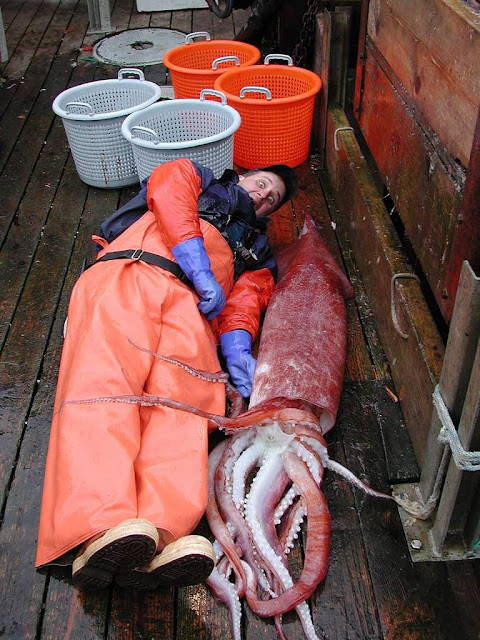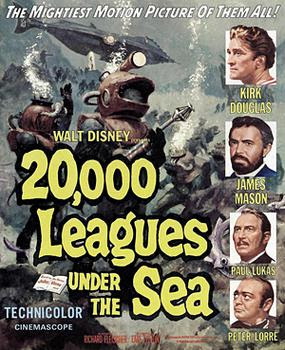 My science Wednesday posting will feature squids. There are over 300 species, and the types we eat in the USA are the market, longfin inshore and shortfin version, most commonly found off California, Cape Cod, Rhode Island and North Carolina. They are typically a foot long. Calamari is the Italian word for squid.
My science Wednesday posting will feature squids. There are over 300 species, and the types we eat in the USA are the market, longfin inshore and shortfin version, most commonly found off California, Cape Cod, Rhode Island and North Carolina. They are typically a foot long. Calamari is the Italian word for squid.Squids:
- Range in size from the tiny pygmy squid at 0.175 grams to the largest invertebrate in the world.
- The kraken, adopted by the Seattle NHL team in 2021, is a sea monster, first mentioned in 1700 by sailors between Norway and Iceland, and no doubt was a legendary giant squid, for the largest octopus lives in the north Pacific Ocean, and is said to grow to 30 feet and 600 pounds.
- Here is a National Geographic video showing this octopus wriggling through a passageway the size of a quarter.
- While NG is credible, I find both a 600 pound octopus, with the ability to do this, unbelievable.
- There are rumors about a 600-pound octopus called King Octopus that lives in the Tacoma narrow.
- Reddit too can find no credible source of a 600 pound octopus, and there are signs that this so-called octopus might have been a squid.
- So is the Seattle Kraken a squid or octopus. Apparently neither, for it is said to be a sea troll called Buoy. He plays tribute to the Fremont Troll, an art piece underneath the Fremont Bridge in Seattle.
- Five largest squids:
- Humboldt Squid, 110 pounds.
- Also called Jumbo Squid, grows to a length up to 7 feet.
- Lives in the eastern Pacific Ocean, and is the largest of the flying squid.
- Usually found at depths of 660 to 12,300 feet.
- Interestingly enough, exhibits chromogenic behavior, generating light to communicate.
- Can swim up to 15 miles per hour and are vicious predators. Other swim speeds.
Humans ................................8 km/hr = 5 mph
Walruses ................................24 km/hr = 15 mph
Turtles (Leatherback) ............35 km/hr = 22 mph
Penguins ................................35 km/hr = 22 mph
Dolphins ................................46 km/hr = 29 mph
Sailfish ...................................110 km/hr = 68mph
- Robust Clubhook Squid also goes up to 110 pounds, but can be 13 feet in length.
- Earns name from distinctive tentacular clubs, with each tentacle containing 15-18 club hooks that latch onto the prey.
- Found in the northern Pacific Ocean.
- Dana Octopus Squid can weigh up to 356 pounds.
- The largest came in at that weight and was only 7.5 feet long.
- Lives in every ocean except the polar seas at depths up to 2400 feet.
- Uses bioluminescence for communication and hunting. Juveniles flash a light for defense.
- Giant Squid, up to 606 pounds.
- Can be up to 43 feet long.
- Lives as deep down as 3280 feet.
- Said to eat sea life as large as a whale.
- Likewise, the sperm whale is the only predator of the giant squid.
- Has large eyeballs, up to 11 inches in diameter.
- Then again, this article indicated that this graphic might have been exaggerated.

- The Colossal Squid exceeds 1000 pounds.
- The largest caught was 43 feet long, but probable estimates go up to 65 feet, with weights up to 1500 pounds.
- Can have eyeballs up to 16 inches in diameter.
- Found in the Southern Ocean up to 13,000 feet deep.
- If calamari rings were made, the size would have been of tractor tires.
- Scientific name Mesonychoteuthis hamiltoni.
- Exhibited at the Te Papa Museum, Wellington, New Zealand. Free.
- Larger beaks than this squid have been found in the stomach of sperm whales.
When in 2019 a 10-12 feet giant squid was filmed by researchers in the Gulf of Mexico, the accomplishment was featured in a CBS news story.
Earlier, in 2006, Tsunemi Kubodera of the Japan National Museum of Nature and Science took this video of a 24-foot female giant squid off Ogasawara Islands, marking the first time a giant squid was filmed alive.
Then in 2012 this 25 foot giant squid was filmed in its natural habitat for the first time by the Discovery Channel and the Japanese television company NHK.
Watch this short video. Here is a 3-minute video. Or a full program by David Attenborough of the Mariana Trench, showing odd creatures.
-




















Comments
Post a Comment